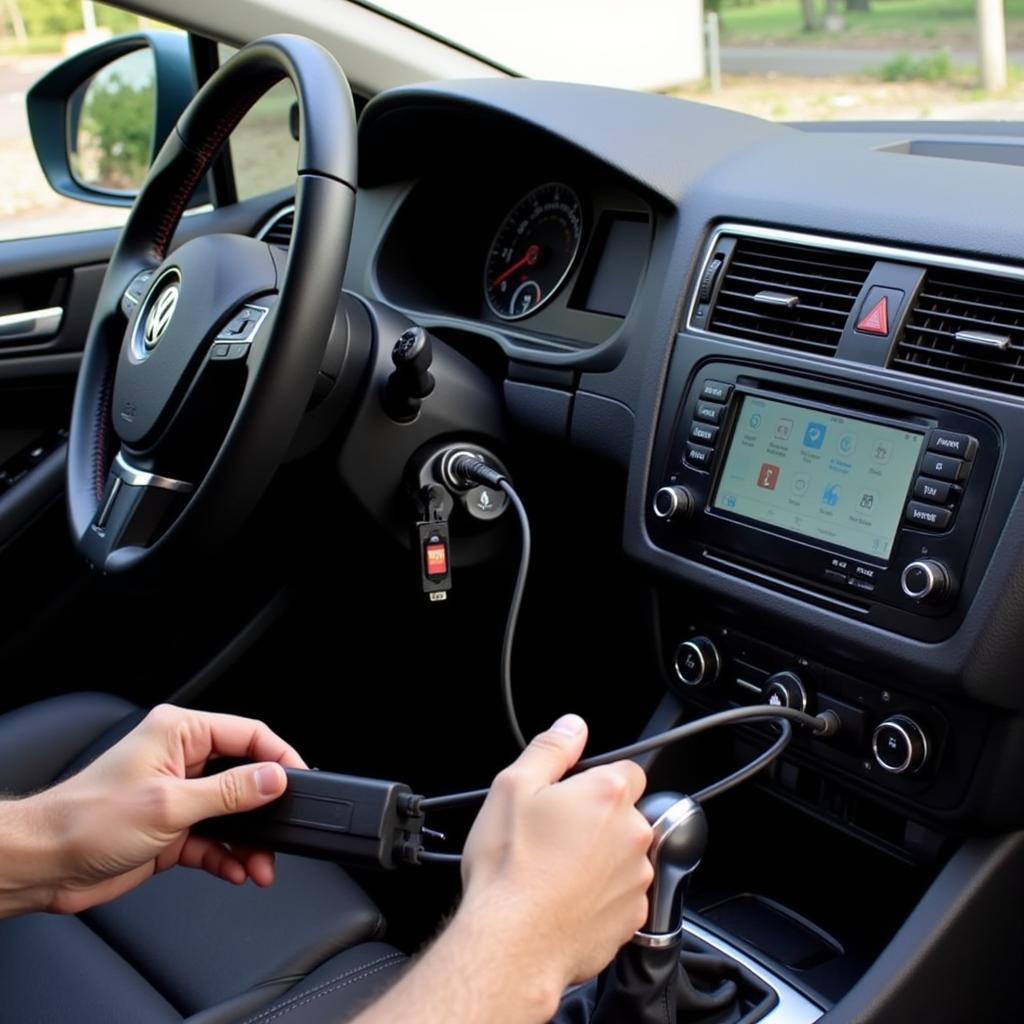Understanding fuel pressure is crucial for diagnosing and fixing engine performance issues. VCDS, the powerful diagnostic software for VAG vehicles, provides direct access to this vital data through its measuring blocks. This article delves into using VCDS to monitor fuel pressure, analyze the readings, and troubleshoot common problems.
What are VCDS Measuring Blocks?
Before diving into fuel pressure specifically, let’s clarify what VCDS measuring blocks are. In essence, they are data points representing various parameters in real-time from your car’s Engine Control Unit (ECU). Think of them as digital gauges offering insights into the inner workings of your engine.
Fuel Pressure: Why It Matters
Fuel pressure ensures the optimal air-fuel mixture for combustion. Too low, and your engine might struggle to start, hesitate under acceleration, or run lean. Conversely, excessively high pressure can flood the engine, leading to poor fuel economy and potential damage.
Accessing Fuel Pressure in VCDS
Locating the correct measuring block for fuel pressure varies depending on your specific VAG engine code. However, you can usually find it within the “Engine” module under labels like “Fuel Pressure (Bar),” “Fuel Rail Pressure,” or similar.
Pro Tip: Always refer to the factory repair manual or a trusted resource like Cardiagtech for the precise measuring block location for your vehicle model.
 VCDS Measuring Blocks
VCDS Measuring Blocks
Interpreting Fuel Pressure Readings
Once you’ve accessed the relevant measuring block, you’ll see live fuel pressure readings. Typical values vary between manufacturers but often range from 3 to 5 Bar at idle. Here’s what to look for:
- Low Pressure: Could indicate a weak fuel pump, clogged fuel filter, or a leak in the fuel system.
- High Pressure: Might point towards a faulty fuel pressure regulator, a restricted fuel return line, or problems with the fuel injectors.
- Fluctuating Pressure: Fluctuating readings can signal a failing fuel pump, a malfunctioning fuel pressure regulator, or a problem with the fuel pressure sensor itself.
Expert Insight: “Always compare live data with specified values from the factory repair manual. This context is crucial for accurate diagnosis,” advises John Miller, a seasoned automotive electrical engineer and author of “Advanced Automotive Diagnostics.”
Troubleshooting Common Fuel Pressure Issues with VCDS
- Suspected Fuel Pump Issue: Monitor fuel pressure while priming the system (turning the key to the ON position without starting). A weak pump may show low pressure even during priming.
- Clogged Fuel Filter: Compare pressure readings before and after the filter. A significant drop across the filter indicates a restriction.
- Faulty Fuel Pressure Regulator: Monitor pressure while raising the engine RPM. A faulty regulator might not maintain a consistent pressure increase proportional to RPM.
 Fuel Pressure Regulator Test
Fuel Pressure Regulator Test
VCDS: Your Go-To Tool for Fuel System Diagnosis
VCDS empowers you to go beyond simply reading fault codes. By understanding measuring blocks, particularly fuel pressure readings, you gain valuable insights into your VAG vehicle’s fuel system health. Remember, accurate diagnosis relies on:
- Identifying the correct measuring blocks.
- Interpreting readings in context with factory specifications.
- Combining data analysis with systematic troubleshooting.
For more in-depth guides on utilizing VCDS and other automotive diagnostic tools, visit CARDIAGTECH. We offer a wealth of resources to enhance your understanding and empower you to perform advanced vehicle diagnostics.


